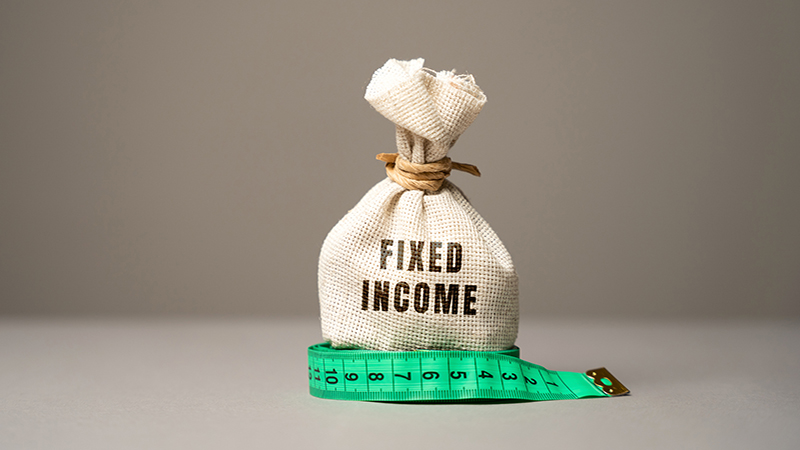The scars of 2022 run deep for many investors. While there were warnings, few had expected 20%+ drawdowns in high quality fixed income portfolios. This has left investors understandably wary about whether it could happen again – and nervous about some of the signs starting to appear in fixed income markets today.
The circumstances of 2022 were extreme. Interest rates had been at unprecedented lows, and then rose incredibly fast. At sub-zero yields, bond markets had become vulnerable to a sophisticated version of pass the parcel, where instead of a present, the person left holding it would be left with a portfolio of underperforming debt.
To be clear, fixed income markets do not have the same vulnerabilities today. However, some concerns have started to emerge on valuations. There are question marks over whether government bond markets are pricing in too high a level of interest rate rises, and whether corporate bond spreads leave any margin for error.
Looking at corporate bonds, Damir Bettini, fixed income portfolio manager at Capital Group, agreed that there are risks.
He said: “There is an ongoing vigorous debate in the market as to whether global corporate bonds are expensive or offer good value. Those that are making the case that the asset class is expensive points out that credit spreads are at multi-decade tight levels.”
He admits that current spread levels suggest a negligible chance of recession, adding: “If we get a reasonable-sized recession – something that is consumer-led, and impacts asset quality, there could be 100bps of spread widening.”
See also: Analysis: To home bias or not to home bias?
However, he said the greatest risks come in a stagflation scenario, where central banks need to raise rates because inflation takes off and there’s no growth. He believes this scenario looks unlikely and that’s why markets are generally taking a positive view. For him, the global economy appears resilient, with inflation falling and plenty of scope for central banks to cut rates even without a recession.
Bettini added: “Even if corporate bonds do look expensive at an aggregate level, it is a broad, deep asset class. We see a fair amount of dispersion across regions and across industries. The US is very expensive, while Europe has lots of interesting investment opportunities. The UK is currently sitting between US and Europe and we’re also finding good opportunities in Asia.”
Perhaps, most importantly, corporate bonds still offer an attractive yield. Dillon Lancaster, manager on the TwentyFour Dynamic Bond fund, said: “When yields are attractive and correlations are correct – ie a negative correlation between corporate and government bonds – fixed income markets usually behave very well. Our Dynamic Bond fund has a yield of 6.7%, and the average rating for our holdings is BBB+.” This combination of high yield and low risk is likely to keep investors interested in the near-term.
Government bonds
Government bonds are facing different pressures, but the biggest problems are appearing in the US market.
David Roberts, head of fixed income at Nedgroup Investments, said: “At the time of the recent US rate cut US 10-year Treasury bonds paid a yield of 3.65%. Thanks in part to stronger than forecast data, stronger perhaps than the Fed had anticipated, that yield actually increased to more than 4% by 6 October. Yields had already been rising for a couple of weeks prior to [Jerome] Powell cutting rates – markets priced too many cuts, were too worried about the jobs market and started to fret about post US election fiscal policy.”
Lancaster said post-election policy is a worry, with neither side appearing to care very much about whether the deficit keeps expanding.
He added: “The main thing for the market is not who is going to win, but the make-up of the Senate and House of Representatives. The market will breathe a sigh of relief if there is a split government. The US is the founding father of checks and balances in its system. If there are competing interests from Congress and the President, nothing gets done. The market wants gridlock because that might help bring the deficit under control.”
His view is that longer-dated US government bonds could be vulnerable to a sell-off if there is a Republican sweep. Trump’s tariffs could be inflationary and there would be worries over any interference with the independence of the Federal Reserve. In a split government, long-dated bond yields could fall, and under Harris, they would probably stay unchanged.
See also: Analysis: Should investors care about the US election?
Mark Dowding, BlueBay CIO, RBC BlueBay Asset Management, is bearish on 30-year yields. He said: “Looser fiscal policy points to a need for term premia to increase on a structural basis, and we think fair value for the long end of the curve is likely to sit closer to 5%.” It is currently 4.4%.
Lancaster said there is an Armageddon scenario, where the US experiences a Liz Truss style meltdown in its bond market. It is worth noting that a significant chunk of US treasuries are bought by ‘unfriendly’ nations, such as China. However, he sees this extreme development as a remote possibility, and believes there is always likely to be a buyer for US treasuries.
Government bond markets elsewhere do not have the same political risks, nor do they have the same expectations on rate cuts built in, though an Armageddon scenario would sink all boats. Non-US governments cannot afford to take such a devil-may-care approach to their deficits. This is particularly notable in the UK, when government bond yields have proved sensitive to merest hint that Chancellor Reeves may change the debt calculations to support investment.
The overall picture is that bond markets are not cheap in aggregate, but there is considerable nuance beneath the surface, with different durations, regions and sectors offering different value. On core metrics such as income and diversification, fixed income still earns its place, but there are pitfalls, and the environment argues for selectivity.








